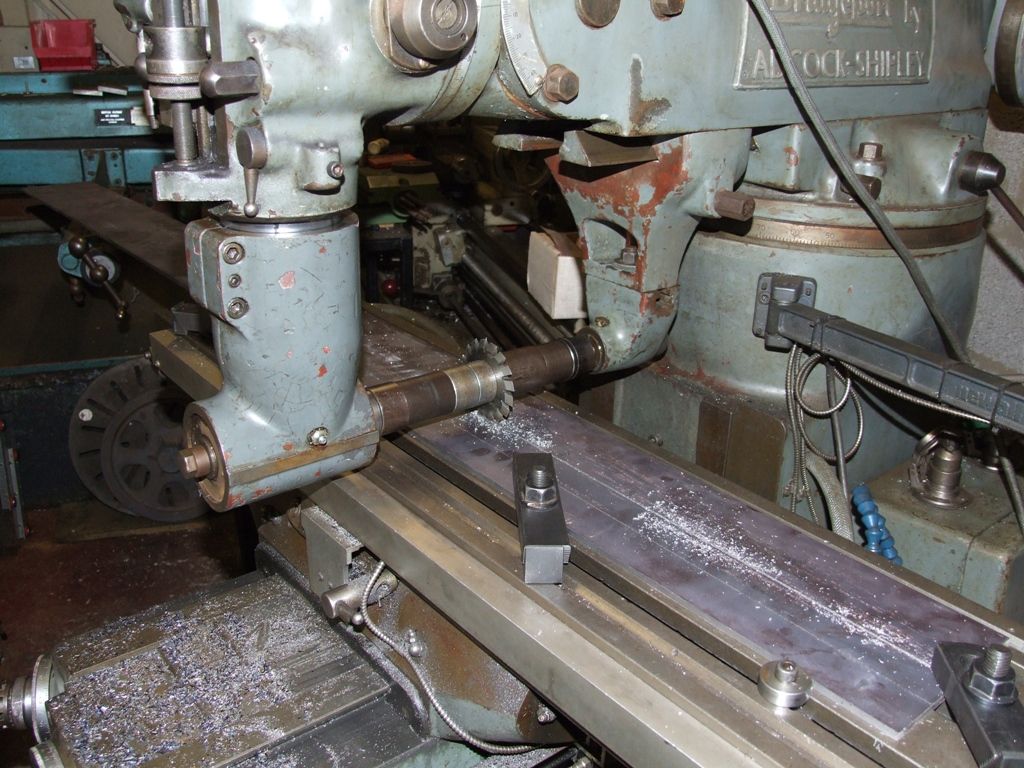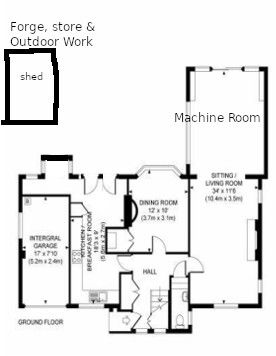Posted by William Ayerst on 28/03/2021 20:56:57:.
…
I emphasise that at this point I don't NEED a mill – but I'm sure I will do, …
For context – My old workshop was a detached concrete garage, the new one for now is an insulated, powered garden shed about 15' x 8' – which I think rules out a Bridgeport Series II fairly definitively. There is the possibility of a purpose-built outbuilding at the end of the garden, or the use of an integated garage space if using the shed is an awful idea.
I feel like a perfect solution would be a Harrison horizontal miller, with a vertical milling attachment add-on as well – but I don't know if that is an unreasonable expectation?
… I am happy to put my money where my mouth is. My budget is up to about £2k, …
Last point first, there is an immediate collision between a budget of up to £2k and ' I am happy to put my money where my mouth is'! And you do need a mill, mine is used more than my lathe.
Not too bad if £2k covers paying for the machine only, but £2k is unlikely to be enough if delivery, tooling and accessories are needed too. Worse if the shed floor needs strengthening, a VFD and/or new motor is needed, and the shed has to be insulated and wired for beefy power by an electrician. For budget reasons most of us build our workshops up step by step, perhaps taking a few years to get the basics, and never achieving perfection. I would have to move house to get a bigger workshop, so what I can do is limited by space.
An advantage of Chinese milling machines is their availability in a range of sizes, which makes it easier to buy the biggest that will fit. Finding a suitable second-hand machine is more a matter of luck, and considerable persistence may be required to find a suitable machine. If a Bridgeport is too large, many of the other ex-industrial machines will be too. Big machines tend to be cheaper because there's less demand for them, while home-workshop sizes are more likely to start a bidding war on ebay. Look carefully at the capabilities of the smaller machines. Some are designed for precision work on small parts and don't do general purpose milling well. Others may be too small for what you need – Myford VMC (Made in Taiwan), wasn't big enough for me.
My feeling is Chinese vs second-hand industrial isn't a good first decision to make first. Better to consider practicalities like the sort of work to be done, size, weight, spares availability, tooling, and power requirements etc. Repair costs may also an issue; if genuine new parts are required for ex-industrial kit, expect to pay eye-watering full price for them, and £2k won't go far in that market. Therefore your ability to judge condition and fix second-hand machine tools is important. (I was very naive starting out. Hot on theory, weak on practice!)
Horizontal Milling machines excel at what they are for, but I feel an odd choice for an ordinary home workshop. Their ability to gang-mill and hack through metal at high-speed isn't as useful to Model Engineers as the general utility of a vertical machine. Maybe if Ayerst Locomotives are going to be produced for sale in batches, but I think a vertical mill more suitable for one-offs. As always, tool usefullness depends on the job: screwdrivers are hopeless with nails.
The total budget matters; if cash is available for a purpose built outbuilding, consider spending it instead on really good machines. So far as I know, no Model Engineer has bought a modern Chinese industrial machine because our budgets limit us to hobby class and second-hand. Why not spend £20,000 on one of China's very best?
As a beginner I wasted too much time agonising about choices. Being ignorant about what tools could do and what exactly I wanted them for made setting up a workshop downright hard. In the end I bought a mini-lathe, learned a lot from it over a couple of years, and was then far better placed to move on. Having bought the largest Chinese Lathe and Mill I could accommodate, and used them in anger on a wide range of projects, I'm far more confident of assessing second-hand. But I haven't bothered because it turned out the Chinese gear does all I need, job done. Their main shortcoming is taking longer to do everything because the controls are relatively crude, which slows down setting up, but with care they cut metal as well as any other machine and – in the thou range – as accurately. In comparison, an industrial lathe might be massively rigid with a slick gearbox, camlock chucks and other goodies. My hobby lathe has a stop-to-change gearbox with a few ratios making it necessary to alter the banjo, a bolt on chuck that takes 4 or 5 minutes to swap, and heavy cutting causes the machine to flex. None of the shortcomings effect the quality of my workmanship, but they do slow me down. It doesn't matter to me.
Dave
William Ayerst.










